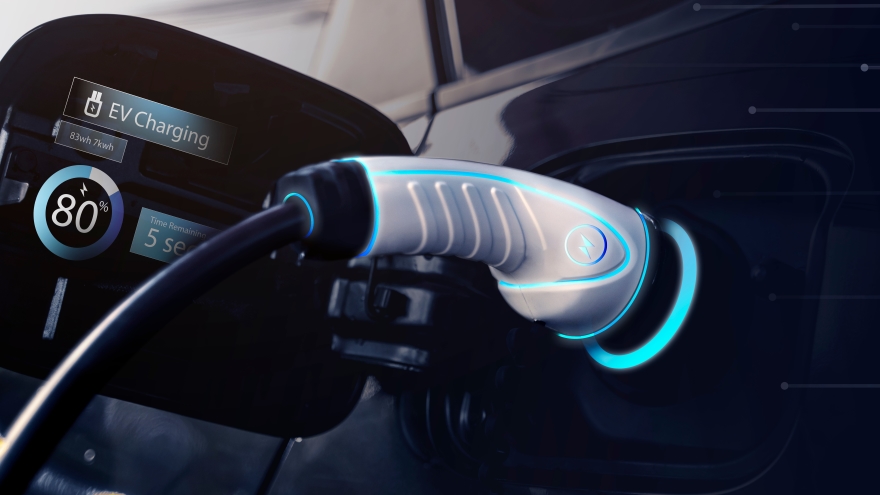COMMENTARY: Numerical path to build EV gross & still boost consumer affordability

The inventory of even moderately priced (with OEM incentives) electric vehicles already has grown to double the average day’s supply of ICE units, even before the onslaught of 100 new EV models coming on the market in the next 30 months.
On the used-car side, many dealers lament that they can’t move even used EVs in the $30-35,000 range, while these units seem to devalue by the day. It’s clear that there is a growing problem that a lot of popular media and forecasters seem to want to ignore, in rosy projections of future EV growth.
Vehicles, in general, right now are too high priced for regular consumers, and EVs, being on average 20% more expensive and coming with major question marks for the vast majority of non-affluent folks, are just not a desirable alternative in mainstream America.
Add to this the almost non-existent margin for dealers at full MSRP, for non-luxury EVs, and there is no motivation for dealers, or consumers, to sell or buy an EV over an ICE unit.
Any surprise inventory is building?
The one bright spot though, is that indeed, research has proven that if someone actually drives an EV, particularly for an extended length of time, the benefits are apparent, most fears subside, and many drivers are buyers.
Affordability is the key here, and a new method of “sale” that lets a prospect drive an EV before making a long-term financial commitment is one solution, a subscription/micro-lease/long-term rental.
First, when mentioning “subscription,” don’t misconstrue the term for the fiasco the OEMs moved forward on a few years back, a multi-vehicle offering based on the assumption the affluent wanted to switch vehicles with seasonality.
In contrast, rather, in this description, whether you call it a “subscription,” “micro lease” or “long-term rental” it all represents the same thing, flexible, turnkey, convenient personal transportation for a single vehicle “owner” without a long-term financial commitment.
So, how does this help both dealer gross and make EV vehicles cost less for the consumer?
Simple, “Sell it Twice,” and leverage both the new and used federal tax incentives on the same vehicle.
It’s as easy as 1, 2, 3…
Step No. 1: Right now, very few new EV/PHEVs receive the full federal $7,500 tax credit for consumer purchases, due to the sourcing restrictions. However, by putting any new EV/PHEV vehicle in a “commercial lease” (any rental or micro lease) a dealer can get the full $7,500 new EV/PHEV federal tax credit (Treasury rule 45W), with no sourcing requirements,
Doesn’t matter where the EV/PHEV is made or where the battery materials came from, you get the full $7,500 — this is all the dealer’s money — for putting the vehicle in commercial rental service, but some could be passed on the customer with lower micro-lease/rental payments.
Step No. 2: Put this new EV/PHEV in monthly micro-lease (rental, subscription whatever you want to call it) fleet (on your rental car floor line), and collect profitable revenue every month the vehicle is in long-term rental status while writing down the vehicle much quicker than actual depreciation.
There are software platforms available today, such as DriveItAway, that make this very easy, an all-app-driven, truly digital transaction requiring very little “people overhead” to manage a large portfolio of vehicles – vehicle usage payments, insurance payments, tolls, etc. all turnkey in-app, with telematics on the vehicle to charge immediately for extra miles (and with tracking and ignition “kill switch” capabilities).
Side note: at DriveItAway we have thousands of 9-5 employees around the US who want to rent-to-own long term, there is a lot more demand than supply, so we can even send you prospects.
Step No. 3: After the new EV/PHEV, in micro-lease/long term rental status, is at least two model years old, and written down to a value of $25,000 or less, at any time you can sell it as a used vehicle, and, as the first dealer to retail sale, it will qualify for the $4,000/30% (whichever is lower) federal used vehicle tax credit (cash on the hood starting in 2024), if sold to someone who makes no more than $75,000 annually ($150,000 on a joint return/$125,000 as head of household).
Note, the longer you keep the vehicle in service with usage payments writing down the cap cost of the vehicle, the higher that $4,000 payment becomes as a percentage of the sale price. For example, write it down to $15,000 and you have $4,000 cash on the hood for the retail purchaser, pretty easy to get regular folks financed with that down payment courtesy of Uncle Sam.
That’s the way to make a low gross EV/PHEV into a high gross vehicle, and leverage both the new and the used maximum federal EV/PHEV tax credits, $11,500 in total, on the same vehicle, while collecting regular revenue in the process — beats paying floor plan interest for months — just “sell it twice.”
By selling the same vehicle twice, once as new to their in-house rental company and then again as a used EV, dealers can garner an extra $11,500 in federal incentives to contribute to gross on the same EV.
On the used EV side of the business, I’ve heard from many dealers, that any EV on the lot for $30,000 or so can’t be moved profitably, as the $4k/30% used federal incentive “cash on the hood” (in 2024) kicks in at $25,000, and there are very few desirable $25k used EVs.
Here again, putting that $30,000 EV into rental or micro lease status solves a big problem in unlocking the $4,000/30% federal used EV incentive represents.
Put that $30,000 retail EV in rental status for say a year or so, to a driver that ultimately might want to buy it, and write down another $5,000+ (we do this every day, $150-200 a week is a realistic usage payment), and now own this vehicle for less than $25,000 and have another $4,000 cash on the hood, for a retail sale, courtesy of the federal used car tax incentive.
It sure beats having it sit on floorplan and/or discounting the unit at wholesale, and the extra $4,000 may make the difference on getting that customer bought.
A dealer sales program that can substantially build EV dealer gross while making EV vehicles more affordable to average consumers — a clear win for all.
John Possumato is the CEO of DriveItAway, an app/platform to facilitate dealer-based consumer vehicle subscriptions and leases.


